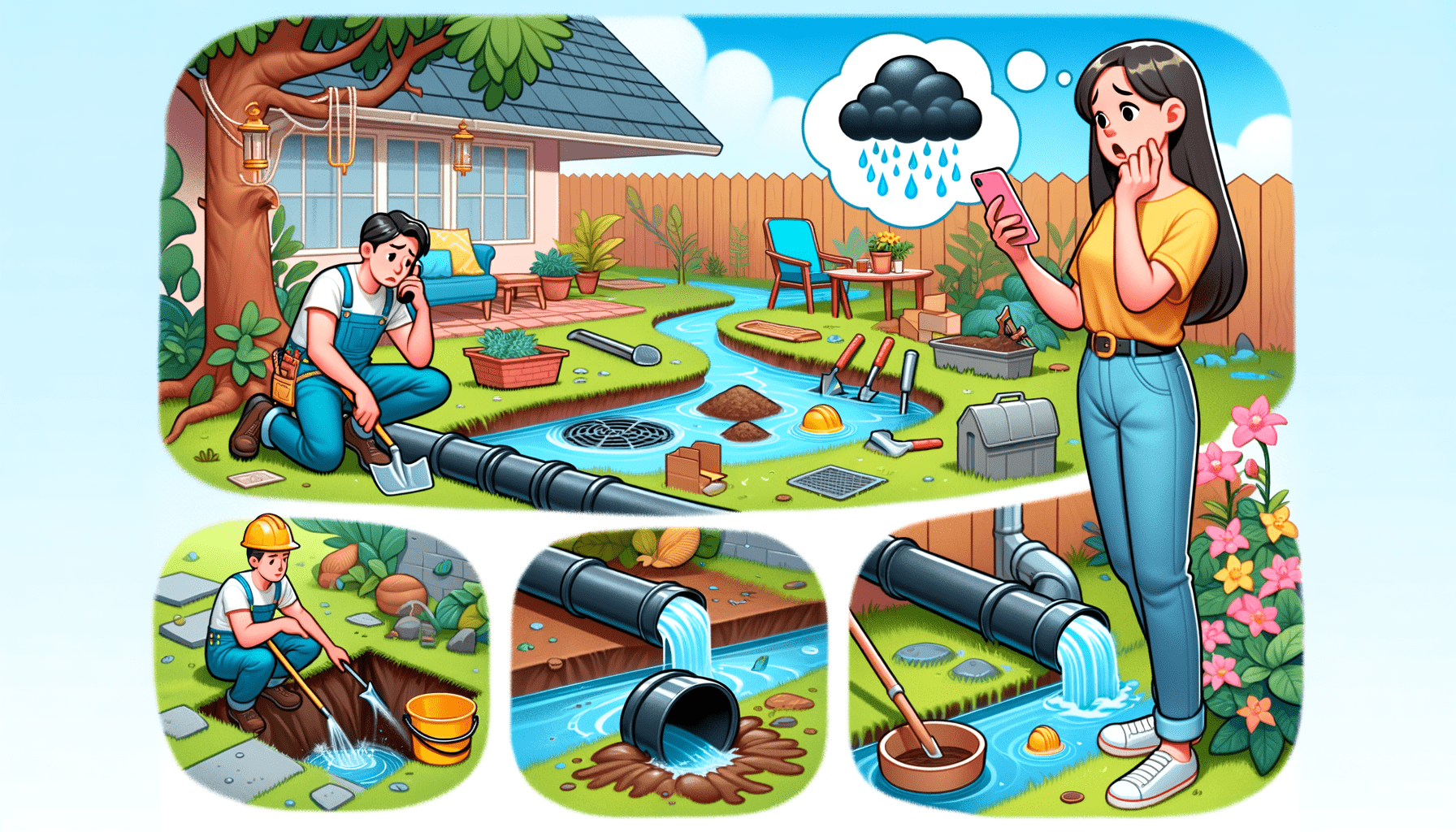Did you know problems with outdoor drainage can lead to all sorts of serious issues for homeowners? Such problems can range from a soggy garden to the more severe like basement flooding and the resulting damage. Not to mention, it can have a negative impact on your local environment. In this comprehensive guide, I’m going to discuss 30 topics, starting with the top 10 easy-to-do DIY solutions for outdoor drainage problems. So, roll up your sleeves and let’s dive in!
Contents
- 1. Identify Drainage Issue Source
- 2. Check Downspouts for Blockages
- 3. Clean Gutter System Regularly
- 4. Maintain Surrounding Vegetation
- 5. Install Drain Snake Tool
- 6. Use Hydro Jetting Tools
- 7. Apply Natural Declogging Methods
- 8. Implement French Drainage System
- 9. Install Dry Creek Beds
- 10. Make Rain Gardens
- 11. Grading Yard Strategy
- 12. Waterproof Your Basement
- 13. Resurface Concrete Surfaces
- 14. Use Outdoor Pump Systems
- 15. Apply Concrete Sealer
- 16. Implement Swales Design
- 17. Install Trench Drains
- 18. Maintain Septic Systems
- 19. Re-route Drainpipes
- 20. Adjust Sprinkler Systems
- 21. Use Drainage Fabrics
- 22. Install Geotextile Channels
- 23. Apply Erosion Blankets
- 24. Call Professional Plumber
- 25. Avoid Improper Drain Attachments
- 26. Minimize Impervious Surfaces
- 27. Install Permeable Paving
- 28. Implement Green Roofs
- 29. Use Underground Storage Basins
- 30. Maintain Regular Checks
- Conclusion with a Positive Endnote
1. Identify Drainage Issue Source
First and foremost, identify the source of your problem. This may be a storm drain, a rain gutter, or even the lay of your land due to its physical geography which is causing surface runoff. It may require a little detective work. For instance, if you’re experiencing soil erosion after heavy rain, you’ll need to ascertain where the water is coming from and why.
2. Check Downspouts for Blockages
The key to good water management is ensuring the path of flow isn’t obstructed. Downspouts play a crucial role – they channel rainwater from your gutters away from your home. However, if blockages occur due to leaves or debris, it may cause water to overflow onto your garden or lawn. So, make it a habit to occasionally check and clear out any obstructions.
3. Clean Gutter System Regularly
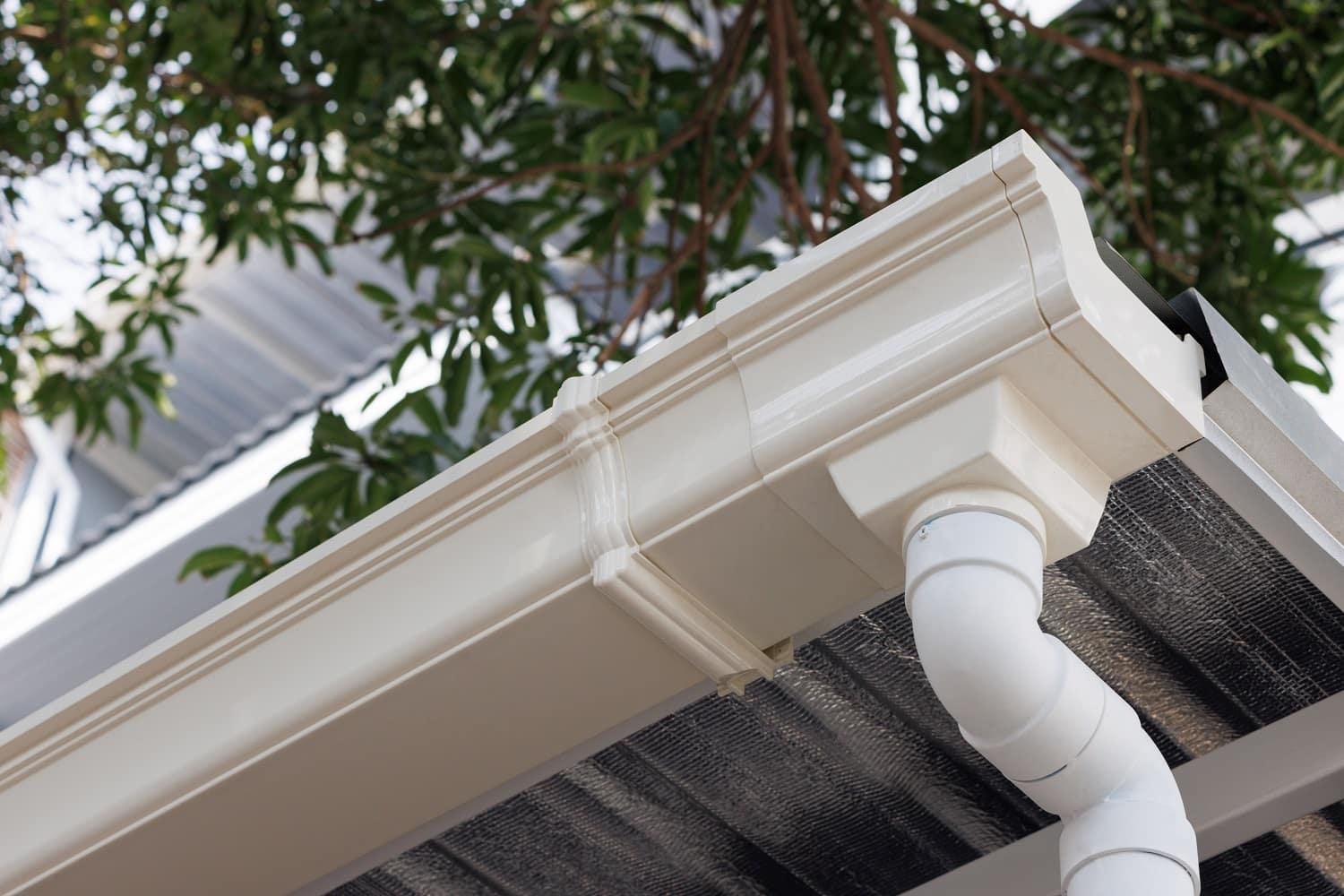
The same applies to the overall gutter system as well. If it’s filled with particles from natural materials such as leaves or twigs, these can create a dam causing water to fill up instead of channelling away as intended. Remember, regular maintenance will help prevent costly repairs later on.
4. Maintain Surrounding Vegetation
Surrounding vegetation, from garden plants to trees, can impact your drainage. The presence of roots can lead to blockages in pipes (fluid conveyance) due to root intrusion. Trim this vegetation and reduce the chances of unwanted pipe blockages.
5. Install Drain Snake Tool
A drain snake is a handy device used to dislodge clogs in your plumbing system without digging a trench or calling a professional plumber. Simply insert it into the problematic pipe and twist to break apart and remove the obstruction. It’s a useful tool for any home DIYer!
6. Use Hydro Jetting Tools
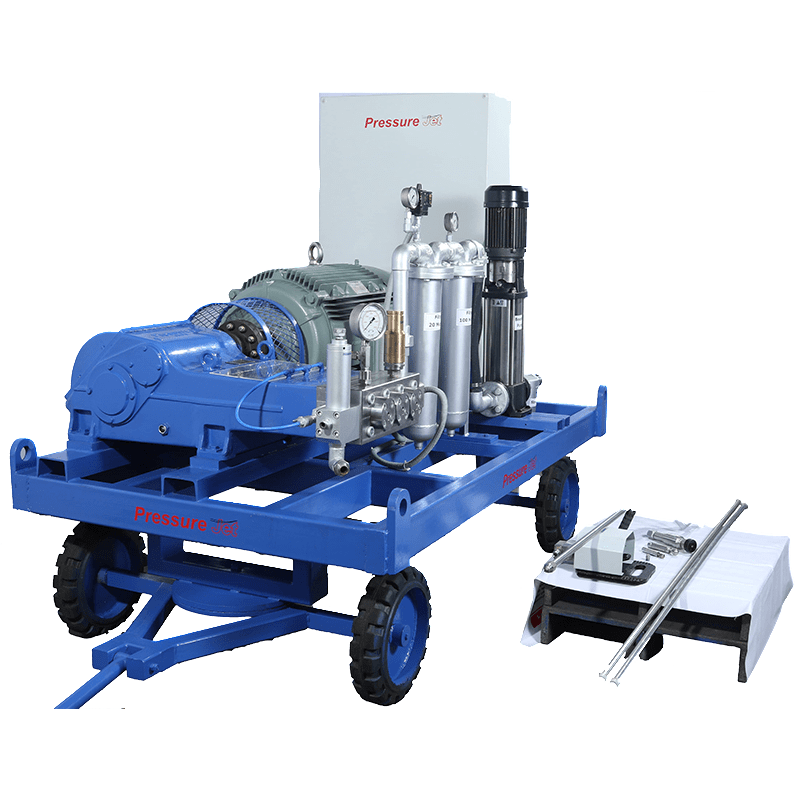
If you have stubborn blockage, turning to hydro jetting tools could help. Hydro jetting involves shooting high-pressure water through your pipes. It can clear out blockages that other tools can’t, including from tree roots or hardened deposits. Not only is it powerful, but it’s also environmentally friendly as no chemicals are involved.
7. Apply Natural Declogging Methods
If you fancy more natural and sustainable ways, try declogging methods using simple household ingredients like vinegar and baking soda (both are natural hydroxides). Repeatedly using them can tackle smaller obstructions quite effectively. Moreover, you’re refraining from using chemical solvents which is good for the natural environment.
8. Implement French Drainage System
A French Drain – despite the name, it’s not a fancy garden feature. It’s a trench filled with gravel or rock containing a perforated pipe that redirects surface water away from an area. If you have drainage basin concerns or surface runoff issues, this might be ideal for your land management problems!
9. Install Dry Creek Beds

Dry creek beds are another landscaping solution that can help manage surface runoff and prevent flooding. They’re created by digging a trench, adding a layer of landscape fabric, followed by rocks and stones to mimic a natural streambed, adding aesthetic appeal as well!
10. Make Rain Gardens
Rain gardens are depressions planted with native vegetation that capture rainwater and allow it to seep back into the ground. They provide a practical yet attractive solution to managing surface runoff. Also, they promote local horticulture and contribute positively to environmental science and sustainability efforts!
11. Grading Yard Strategy
In dealing with outdoor drainage problems, one efficient solution is adopting a grading yard strategy. The principle here entails creating a gentle slope that directs water away from your house and towards a storm drain or rain garden. First up, you must consider the soil type, as it influences the absorption rate of water. It’s also important to be aware of any environmental factors to avoid unnecessary erosion of the drainage basin or alter the physical geography of your place unfavorably.
12. Waterproof Your Basement
Basements can be susceptible to flooding due to surface runoff. To protect your basement and enhance water management, we suggest waterproofing it. This involves coating its walls and floor with a waterproof sealant. Ensure proper maintenance post-application, as even tiny cracks or flaking can expose your basement to moisture, leading to myriad issues like mould formation and structural damage.
13. Resurface Concrete Surfaces
Resurfacing concrete surfaces is significant in addressing water accumulation issues around your home. Broken or deteriorated surfaces may cause poor water management, leading to pooling and resultant problems like mould growth and decreased landscape appeal. By resurfacing with top quality concrete materials, you create an efficient path for redirecting water to a more appropriate place like a rain gutter or French drain.
14. Use Outdoor Pump Systems
Another reliable method for minimizing outdoor drainage problems is by using an outdoor pump system. It’s particularly effective if your area experiences heavy rainfall frequently. The pump system operates by pushing the water from higher grounds into lower ground or directly into the storm drain, preventing flood formation around your home and garden.
15. Apply Concrete Sealer
To prevent water from infiltrating and damaging concrete surfaces around your yard, you might consider applying a concrete sealer. This transparent material acts as a protective layer, keeping excess water from penetrating the concrete. During application, remember to clean the surfaces thoroughly to remove any dirt or previously applied sealants for optimal results.
16. Implement Swales Design
A swales design in your landscape can provide a practical solution to draining surplus rainwater effectively without causing soil erosion or flooding. These channels, usually grass-covered, can be an attractive addition to your garden design, combining style and functionality. Swales can channel the flow of water towards a desirable spot like a rain garden or stream in harmony with natural resource management practices.
17. Install Trench Drains
Trench drains are an excellent solution for redirecting surface runoff away from specific areas. Incredibly versatile, you can install them around driveways, patios and more. Remember to dig trenches accurately for correct drain fitting and cover them with grating or natural materials to blend with the surrounding landscape.
18. Maintain Septic Systems
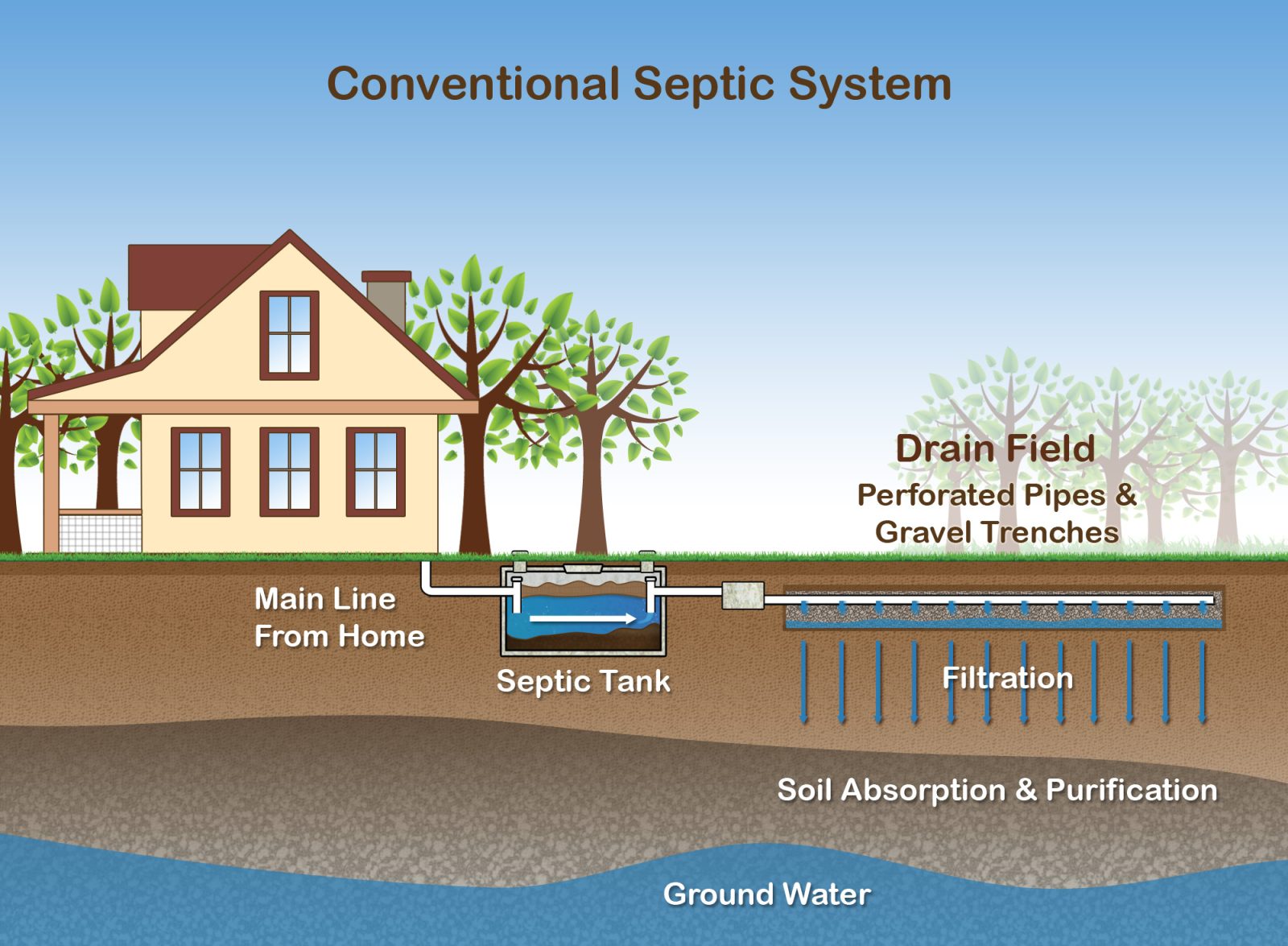
Maintaining your septic systems regularly is vital in preventing outdoor drainage problems. Regular inspections to check for issues like root infiltration into pipes or full tanks that could cause back-ups are helpful practices. Additionally, practicing sensible water usage reduces stress on the system, ensuring it operates efficiently longer.
19. Re-route Drainpipes
Sometimes you might find that your drainage issues persist despite attempted solutions, and it might be due to wrongly directed drainpipes dumping water toward your house instead of away from it. In such cases, re-routing drainpipes could be necessary for efficient water management and prevention of basement flooding problems.
20. Adjust Sprinkler Systems
Is your lawn always waterlogged after irrigation? It might be due to poor configuration of your sprinkler system. Sprinklers that produce too much water faster than your soil can absorb lead to standing water and potential soil erosion. Adjust your system to irrigate appropriately according to your landscape’s needs and weather conditions so your lawn thrives without the drainage woe.
21. Use Drainage Fabrics
Drainage fabrics are a handy tool for resolving outdoor drainage issues. These fabrics, also known as geotextiles, act as filters that keep soil in place while allowing water to pass through. When you install these around your problematic areas, it effectively prevents the soil from clogging up the drainage system, encouraging smoother flow of water. Remember, putting the fabric right involves folding it properly around the corners and securing it well into the ground so that it doesn’t get displaced over time or under pressure.
22. Install Geotextile Channels
Another effective solution is installing geotextile channels. Geotextile channels not only manage surface runoff but, because they’re permeable, assist in directing it to the appropriate outlets. They can be filled with gravel or other types of infill to blend with your garden design while serving the practical purpose of effective drainage. However, their installation requires a certain level of skill and understanding of your land grade.
23. Apply Erosion Blankets
Erosion blankets provide an eco-friendly method for combatting slopes and hilly areas that tend to wash away when it rains heavily. These blankets hold the topsoil in place while allowing grass and other plants to grow through them. They degrade naturally over time, leaving behind a fortified and stabilized hillside. You’ll want to secure these blankets properly so they don’t displace during rainfall.
24. Call Professional Plumber

If your drainage problems persist despite your efforts or if they are too complex to handle yourself, calling a professional might be your best bet. Experienced plumbers possess a comprehensive understanding of drainage systems and can not only detect hidden issues but also provide long-lasting solutions. Remember to share all the details with your plumber to ensure the problem is effectively addressed.
25. Avoid Improper Drain Attachments
If misconnected or used improperly, drain attachments and modifications might complicate drainage problems rather than solving them. Be careful not to connect them to storm drains or directly to the sewer system, which might lead to contamination and legal issues. If you’re unsure, seek advice from a professional. Your local plumber should be able to help out!
26. Minimize Impervious Surfaces
Excess impervious surfaces such as concrete driveways and patios can exacerbate your drainage issues by preventing proper absorption of water into the ground. Instead of having an open lawn which allows rainwater to soak in naturally, these solid constructions lead to water runoff, causing potential flooding. Think about replacing some hard surfaces with permeable paving or grass to minimize this issue.
27. Install Permeable Paving
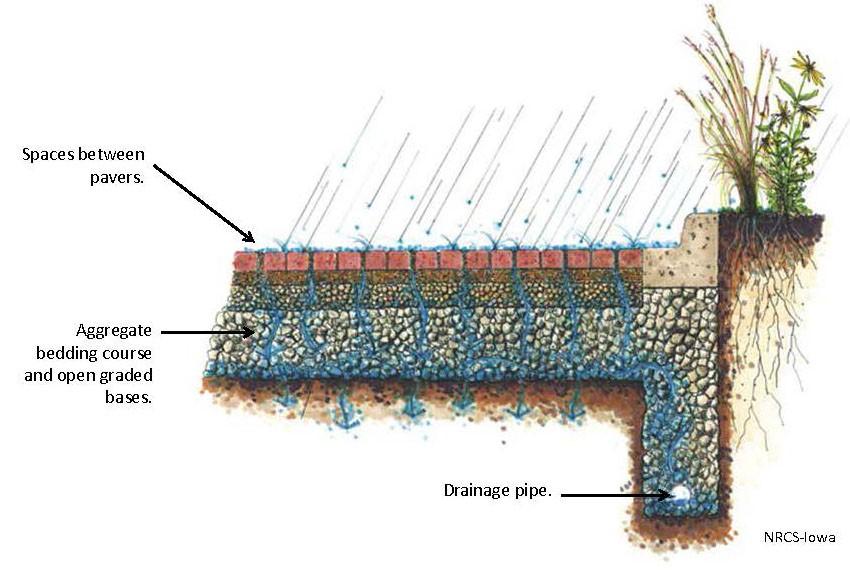
Permeable paving allows water to infiltrate through the surface into the ground below, thereby reducing surface runoff significantly. These porous pavements can be applied on driveways, walkways, and patios, and won’t compromise on aesthetic appeal either! However, do remember that permeable pavements demand a degree of maintenance like regular cleaning to prevent blockages.
28. Implement Green Roofs
A green roof is not just a beautiful architectural feature; it also serves an important practical purpose in managing local drainage issues! These living roofs are home to diverse plant cover that absorbs rainfall and minimizes runoff from your roof, keeping your drains from being overwhelmed after heavy rains. Plus, they regulate temperature and promote biodiversity!
29. Use Underground Storage Basins
Underground storage basins, or rain gardens, offer another eco-friendly strategy for managing surplus water on your property. These basins store excess water and release it slowly into the ground, providing a natural buffer to protect against flooding. They can also be beautifully landscaped with local, water-tolerant plant species, adding to your garden aesthetic!
30. Maintain Regular Checks
Finally, one cannot overemphasize the importance of regular checks and preventive maintenance in ensuring that your outdoor drainage system works its best all year round. This should include monitoring for any visible signs such as water pooling or soil erosion and regular cleaning of gutters and downspouts. Keep a schedule and track your maintenance activities so you’re ready when the rainy season hits!
Conclusion with a Positive Endnote
While these solutions can greatly help in preventing and solving your outdoor drainage problems, remember the ultimate solution is always professional advice. It’s always best to consider hiring an expert plumber if you’re uncertain about managing drainage systems or if problems persist despite your best efforts. At the end of the day, teamwork between well-informed homeowners and their trusted local plumber leads to dry, healthy yards and beautiful homes!
Related posts:
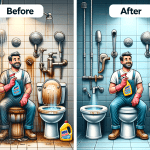 Hard Water Stains Got You Down? Simple Solutions for Sparkling Fixtures
Hard Water Stains Got You Down? Simple Solutions for Sparkling Fixtures
 Confessions of a Plumber: Tell-tale Signs Your Sydney Home Needs Our Plumbing Expertise
Confessions of a Plumber: Tell-tale Signs Your Sydney Home Needs Our Plumbing Expertise
 Banish Blocked Drains: Dan’s Plumbing Can Help with Drain Clogs
Banish Blocked Drains: Dan’s Plumbing Can Help with Drain Clogs
 Upgrade Your Showerhead for Water Savings: Eco-Friendly Plumbing Solutions
Upgrade Your Showerhead for Water Savings: Eco-Friendly Plumbing Solutions
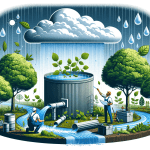 Harnessing the Power of Rain: We Can Help with Rainwater Tank Installation
Harnessing the Power of Rain: We Can Help with Rainwater Tank Installation
 How to Know When You Need an Emergency Plumber
How to Know When You Need an Emergency Plumber

